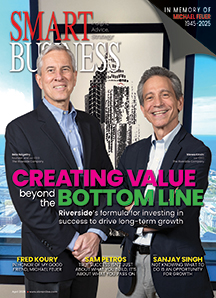Sometimes I get the feeling that the mood of the entire country is shifting. This is especially true in election years. As much as I try to tune out smear campaigns and seek constructive words over angry ones, I still feel the shift. Perhaps you notice it too?
Think beyond politics. Maybe it’s the mood following an underdog sports team breaking a 52-year losing streak. Maybe it’s a mom in a Chewbacca mask. The point is that way we experience everything is suddenly a lot more collective. And it sure does feel like something is happening to the way we perceive this collective mood, doesn’t it?
Turns out, we’re not crazy. The consensus amongst academic researchers who study mass media is that the constant bombardment of messages, both negative and positive, changes the way we think.
Cumulative Effect Theory
There’s even a name for it: Cumulative Effect Theory. This theory states that persistent messages that we receive through media — via television, online news, and through our email and social media channels — ultimately shape the way we perceive the world, even if those messages seem to have minimal initial impact.
The subtle reframing of news stories, for example, the way friends share certain memes or articles but ignore others can actually bend our worldview. This drip, drip, drip of rhetoric can even alter the way we feel about issues, and in the long run, it can change our opinions and our viewpoints… even our values.
Harness the power of positive language
What if we could leverage this phenomenon to affect positive change in our companies? Small shifts in the way we communicate can reap huge benefits. Cumulative Effect Theory suggests we have the power to make those changes positive if we’re vigilant about crafting positive messages — both internally and externally. All we need to do is be more mindful.
No, I’m not recommending group mediation sessions (unless that’s code for nap time!). Just be aware that the communication channels we use are powerful tools. If used consciously and with purpose, they can guide our brand chatter in the right direction. Even when there is no immediate measurable effect, opinions are forming about us that are the result of our tone. Consistency is key. Let’s make it positive.
Emphasize what you can do, rather than what you can’t
This is especially important when dealing with clients and vendors. Protect the relationships you’ve worked so hard for by eliminating “not” from your vocabulary.
What is the difference between “I can’t get that shipment to you before Tuesday” and “I’ll prioritize that shipment so it gets to you by Tuesday?” The former states what you can’t do, and the latter drives the conversation (and relationship) forward.
Telling your client what you can’t do for them invites a negative response. Instead, focus on what you can do for them—and they will too.
Learn to love the compliment sandwich
Remember the trick your teachers used to pull during parent/teacher conferences? For me it usually went something like this: “Lee is always happy to speak up during class, and although he’s sometimes disruptive, he usually finishes his work on time.”
Voila! The compliment sandwich is a creative way to emphasize the need for improvement without depleting morale; it softens the blow of critical feedback while still prioritizing the need for change. Try serving up some delicious compliment sandwiches at your next company meeting or performance review.
Hint: This even works well with clients who have control or trust issues.
Use inclusive pronouns: I, we, our
Inclusive pronouns emphasize collaboration and teamwork. They make it sound like a real conversation and not a corporation addressing a target audience. It’s easy to depersonalize teams, divisions, departments, and entire companies if you refer to those groups as a single, detached entity.
Case in point: “The recruitment team is looking into a new hire” doesn’t give the individuals on that team any agency. Nor does it sound particularly welcoming in terms of a response. Instead, if you rephrase the sentence as, “We are looking into a new hire,” you instantly humanize the team, add immediacy and invite conversation. The team becomes people who are collectively working toward a shared goal.
These little shifts in tone seem insignificant because on a micro scale they are. But at the macro level, when you factor in time and consistency and volume, the perception of your company will always be more positive.
Lee Murray is a writer, graduate student and college writing instructor from Youngstown, Ohio. He leads professional writing workshops for businesses and local governments across the Midwest, and his academic research focuses on improving communication and literacy in the workplace. He can be reached at leejamesmurray@gmail.com

